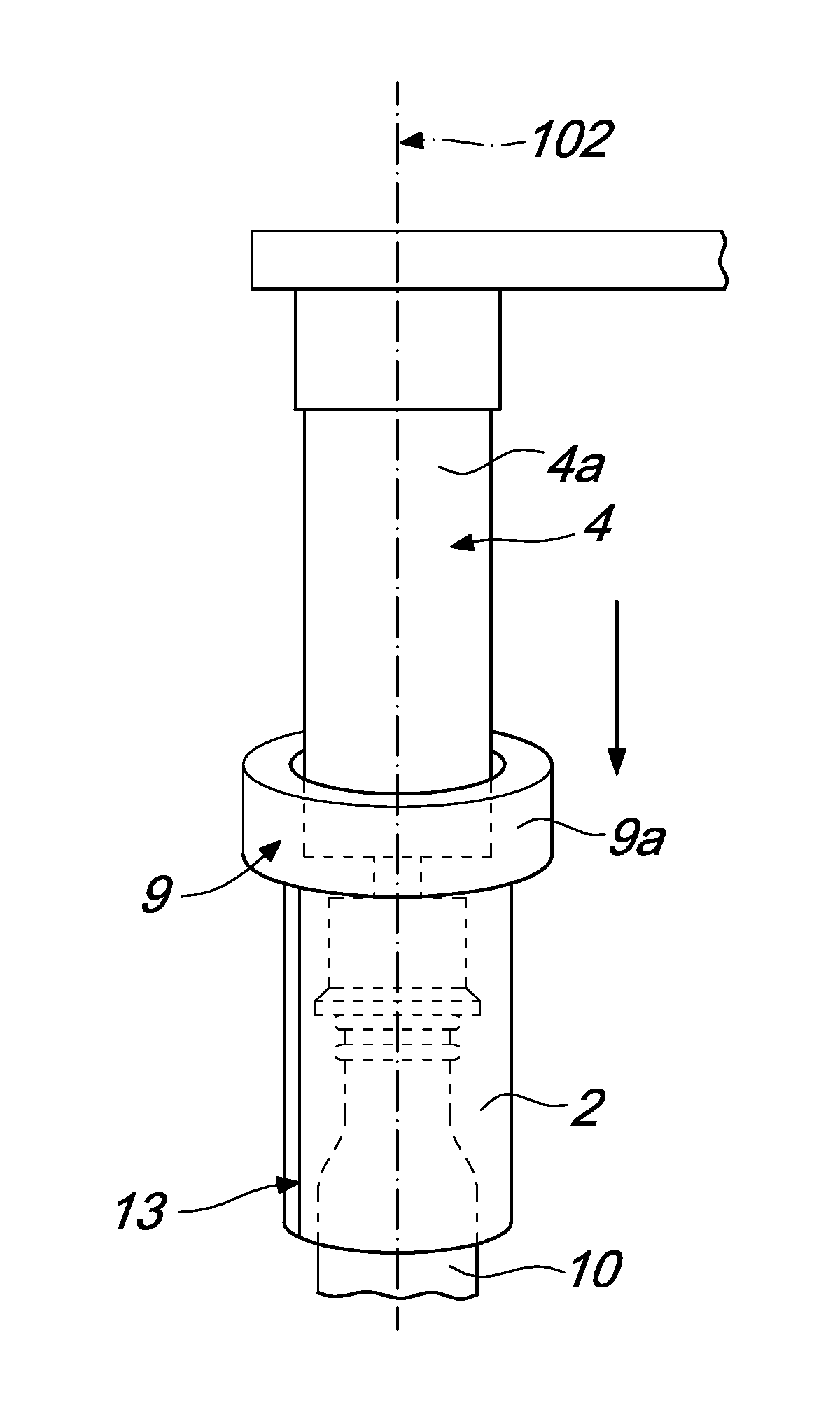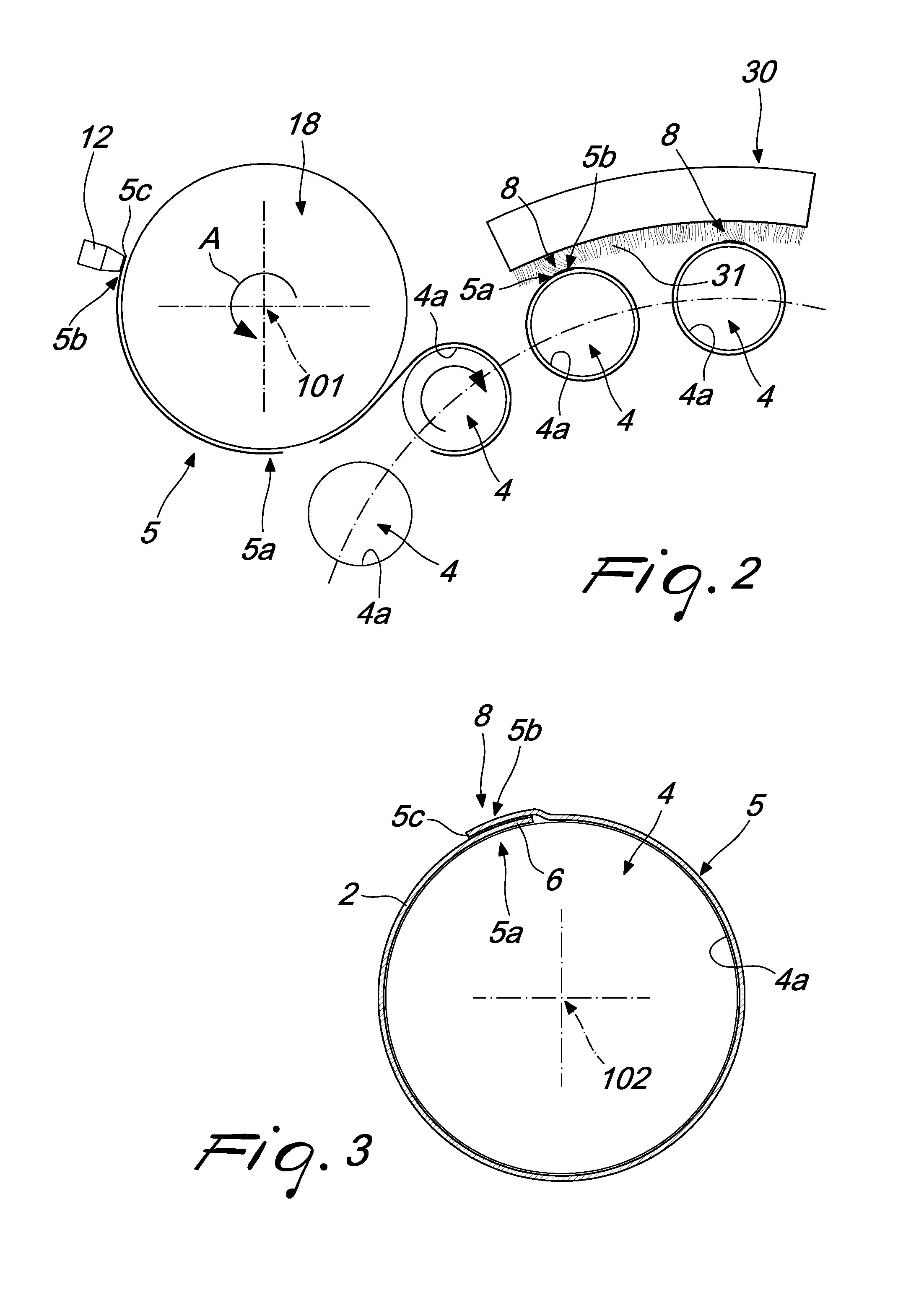Method of producing shrink sleeve labels and device for their production
a technology of shrink sleeve and label, which is applied in the field of producing shrink sleeve labels and a device for their production, can solve the problems of high risk of only obtaining a partial bonding or damaging the overlapping film, and determining an increase in the cost of raw materials, so as to achieve the effect of preventing tension
- Summary
- Abstract
- Description
- Claims
- Application Information
AI Technical Summary
Benefits of technology
Problems solved by technology
Method used
Image
Examples
example 1
[0165]
Heat-shrink filmTriple-layer COC / LDPE / COCTotal thickness of film50 micrometersSolvent usedAlpha-pineneSolvent thickness0.08 mmAdditiveNOPercentage by weight of the additivewith respect to the solventLaser weldingNOPercentage openings after the labeledNo openingscontainer passes through the steamtunnel at 100° C.Quality of the joinNo defects
example 2
[0166]
Heat-shrink filmTriple-layer COC / LDPE / COCTotal thickness of film50 micrometersSolvent usedAlpha-pineneSolvent thickness0.04 mmAdditivecocPercentage by weight of the additive with5%respect to the solventLaser weldingYESPercentage openings after the labeledNo openingscontainer passes through the steamtunnel at 100° C.Quality of the joinNo defects
example 3
[0167]
Heat-shrink filmTriple-layer COC / LDPE / COCTotal thickness of film50 micrometersSolvent usedAlpha-pineneSolvent thickness0.02AdditiveCOCPercentage by weight of the additive10%with respect to the solventLaser weldingNOPercentage openings after the labeledNo openingscontainer passes through the steamtunnel at 100° C.Quality of the joinNo defects
PUM
| Property | Measurement | Unit |
|---|---|---|
| Length | aaaaa | aaaaa |
| Length | aaaaa | aaaaa |
| Fraction | aaaaa | aaaaa |
Abstract
Description
Claims
Application Information
 Login to View More
Login to View More - R&D
- Intellectual Property
- Life Sciences
- Materials
- Tech Scout
- Unparalleled Data Quality
- Higher Quality Content
- 60% Fewer Hallucinations
Browse by: Latest US Patents, China's latest patents, Technical Efficacy Thesaurus, Application Domain, Technology Topic, Popular Technical Reports.
© 2025 PatSnap. All rights reserved.Legal|Privacy policy|Modern Slavery Act Transparency Statement|Sitemap|About US| Contact US: help@patsnap.com



